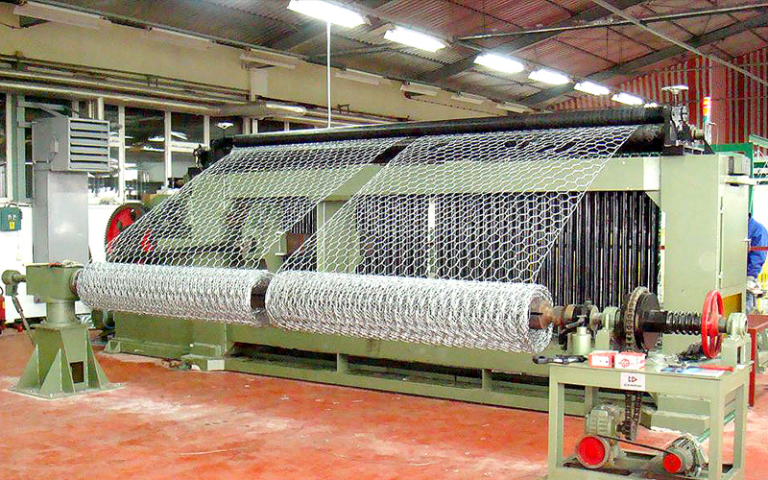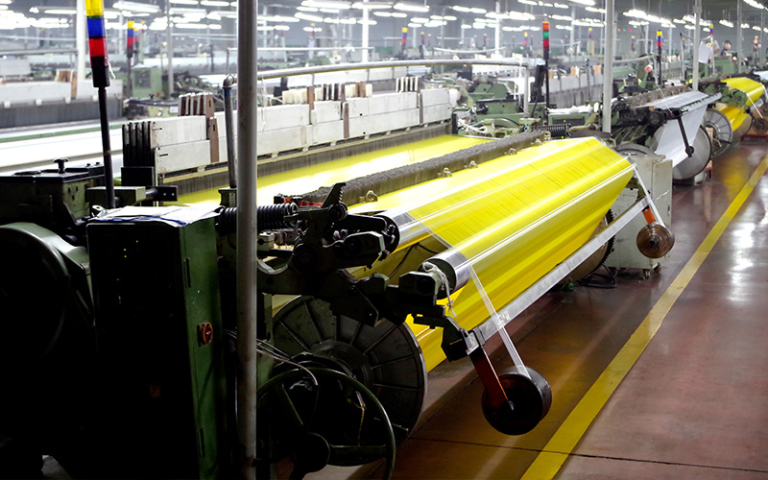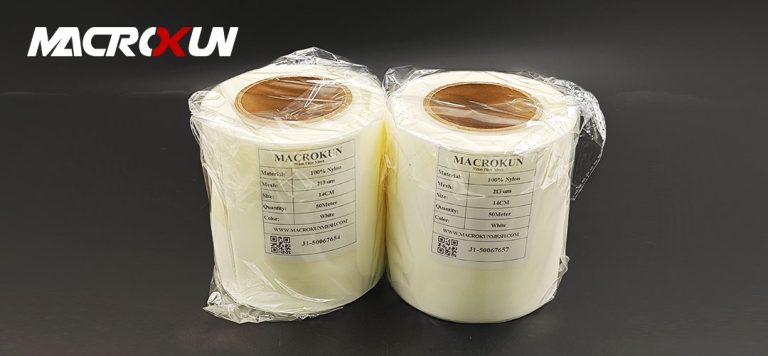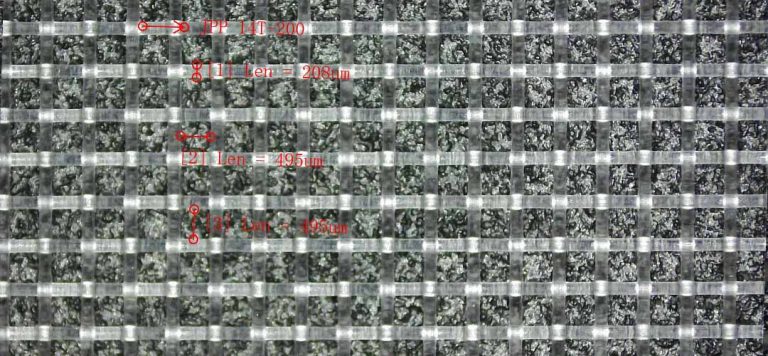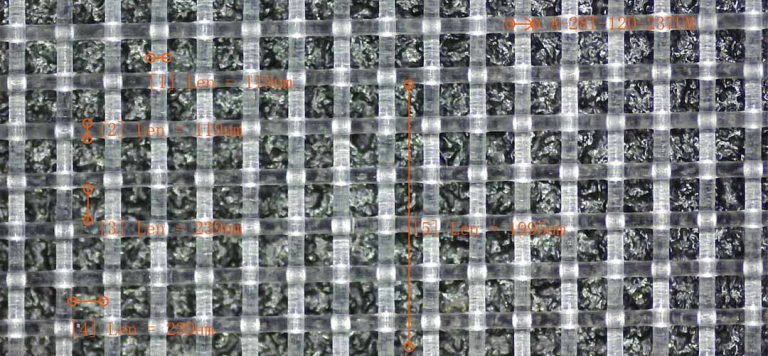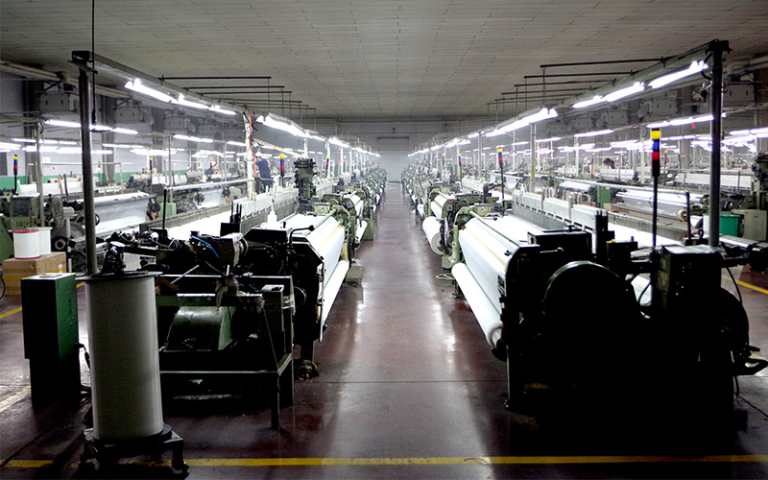Table of Contents
Benefits of Using Nylon Screens for Screen Printing
Screen printing is a popular technique used in the world of design and art to create high-quality prints on various surfaces. One of the key components of screen printing is the screen itself, which acts as a stencil to transfer the design onto the desired material. While there are different types of screens available for screen printing, nylon screens are a popular choice among beginners and experienced printers alike.

One of the main benefits of using nylon screens for screen printing is their durability. Nylon screens are known for their strength and longevity, making them a reliable option for printing multiple designs over an extended period of time. This durability ensures that the screen can withstand the pressure and friction of the printing process without losing its shape or integrity, resulting in consistent and high-quality prints.
In addition to their durability, nylon screens are also known for their flexibility. Nylon is a flexible material that can easily conform to the shape of the printing surface, allowing for precise and detailed prints. This flexibility is especially beneficial when printing on curved or uneven surfaces, as the screen can adjust to the contours of the material to ensure a smooth and even application of ink.
Another advantage of using nylon screens for screen printing is their versatility. Nylon screens come in a variety of mesh counts, ranging from coarse to fine, which allows for greater control over the level of detail and resolution in the final print. Coarser mesh counts are ideal for printing bold and graphic designs, while finer mesh counts are better suited for intricate and detailed patterns. This versatility makes nylon screens a versatile option for a wide range of printing projects.
Furthermore, nylon screens are easy to clean and maintain, making them a practical choice for beginners who may be new to the screen printing process. Nylon screens can be easily washed with water and a mild detergent to remove any ink residue, allowing for quick and efficient cleanup between prints. Additionally, nylon screens can be stored flat or rolled up for convenient storage, making them a space-saving option for small studios or workshops.
Overall, using nylon screens for screen printing offers a range of benefits that make them a popular choice among printers of all skill levels. Their durability, flexibility, versatility, and ease of maintenance make them a reliable and practical option for creating high-quality prints on a variety of surfaces. Whether you are a beginner looking to explore the world of screen printing or an experienced printer seeking a reliable and efficient screen option, nylon screens are a valuable tool to have in your printing arsenal.
How to Choose the Right Nylon Screen for Your Project
Screen printing is a popular technique used in the world of art and design to create high-quality prints on various surfaces. One of the key components of screen printing is the screen itself, which plays a crucial role in determining the quality and clarity of the final print. When it comes to choosing the right screen for your project, nylon screens are a popular choice due to their durability and versatility.
Nylon screens are known for their strength and flexibility, making them ideal for a wide range of screen printing applications. They are available in different mesh counts, which refers to the number of threads per inch in the screen. The mesh count of a screen determines the level of detail that can be achieved in the print, with higher mesh counts producing finer details.
When choosing a nylon screen for your project, it is important to consider the type of design you will be printing. If you are working on a design with intricate details, a screen with a higher mesh count would be more suitable. On the other hand, if you are printing a design with bold, blocky elements, a screen with a lower mesh count may be more appropriate.
In addition to mesh count, the size of the screen is also an important factor to consider. Screens come in a variety of sizes, ranging from small handheld screens to large industrial-sized screens. The size of the screen you choose will depend on the size of the design you are printing and the surface you will be printing on. Larger screens are ideal for printing on large surfaces, while smaller screens are more suitable for smaller projects.
Another important consideration when choosing a nylon screen is the tension of the screen. The tension of a screen refers to the tightness of the mesh, which affects the quality of the print. Screens with higher tension produce sharper, more detailed prints, while screens with lower tension may result in blurry or uneven prints. It is important to choose a screen with the right tension for your project to ensure the best possible results.
When selecting a nylon screen for your project, it is also important to consider the type of ink you will be using. Different types of ink require different types of screens, so it is important to choose a screen that is compatible with the ink you will be using. Some screens are specifically designed for use with certain types of ink, so be sure to check the compatibility of the screen with your chosen ink before making a purchase.
In conclusion, choosing the right nylon screen for your screen printing project is essential for achieving high-quality prints. Consider factors such as mesh count, screen size, tension, and ink compatibility when selecting a screen for your project. By choosing the right screen, you can ensure that your prints are clear, detailed, and professional-looking.
Tips for Properly Preparing and Maintaining Nylon Screens
Screen printing is a popular technique used in the world of art and design to create high-quality prints on various surfaces. One essential component of screen printing is the screen itself, which acts as a stencil to transfer the design onto the desired material. Nylon screens are a common choice for screen printing due to their durability and versatility. In this beginner’s guide, we will discuss some tips for properly preparing and maintaining nylon screens to ensure optimal results in your screen printing projects.
Before using a nylon screen for screen printing, it is crucial to properly prepare it to achieve the best results. One important step is to degrease the screen to remove any oils or contaminants that may affect the printing process. This can be done using a degreasing solution and a soft brush to scrub the screen thoroughly. Once the screen is clean, it should be rinsed with water and allowed to dry completely before use.
Another essential step in preparing a nylon screen for screen printing is to apply a stencil or emulsion to create the design that will be printed. Emulsion is a light-sensitive material that is applied to the screen and exposed to light with the desired design to create a stencil. It is important to follow the manufacturer’s instructions when applying and exposing the emulsion to ensure a crisp and clear design on the screen.
After preparing the nylon screen for screen printing, it is important to properly maintain it to prolong its lifespan and ensure consistent results in your printing projects. One key aspect of maintaining a nylon screen is to clean it thoroughly after each use to remove any ink or emulsion residue that may clog the mesh and affect the printing quality. This can be done using a gentle cleaning solution and a soft brush to scrub the screen gently.

In addition to regular cleaning, it is also important to store nylon screens properly to prevent damage and ensure their longevity. Screens should be stored in a cool, dry place away from direct sunlight and extreme temperatures to prevent warping or stretching of the mesh. It is also recommended to store screens flat or upright to prevent any bending or distortion that may affect the printing process.
In conclusion, using nylon screens for screen printing can yield excellent results when properly prepared and maintained. By following these tips for preparing and maintaining nylon screens, you can ensure optimal printing quality and prolong the lifespan of your screens. Whether you are a beginner or an experienced screen printer, taking care of your nylon screens is essential for achieving professional and consistent results in your screen printing projects.
Step-by-Step Guide to Screen Printing with Nylon Screens
Screen printing is a popular technique used to transfer designs onto various surfaces, such as fabric, paper, and wood. One essential component of screen printing is the screen itself, which acts as a stencil to create the desired design. While there are various types of screens available, nylon screens are a popular choice due to their durability and versatility. In this beginner’s guide, we will walk you through the process of screen printing using nylon screens.
To begin, you will need a few essential materials: a nylon screen, a squeegee, screen printing ink, a frame to hold the screen, and the design you wish to print. Start by securing the nylon screen onto the frame, ensuring that it is taut and free of any wrinkles or creases. This will ensure that your design is transferred accurately onto the surface.
Next, place your design onto the screen, making sure it is centered and aligned properly. You can use a light adhesive to secure the design in place if needed. Once your design is in position, apply a generous amount of screen printing ink onto the top of the screen, just above the design.
Using the squeegee, gently pull the ink across the screen, applying even pressure to ensure that the ink is pushed through the screen and onto the surface below. Make sure to move the squeegee in one smooth motion to avoid smudging or smearing the design. Repeat this process a few times to ensure that the design is fully transferred onto the surface.
Once you have completed the printing process, carefully lift the screen off the surface to reveal your printed design. Allow the ink to dry completely before handling the printed surface to prevent smudging or smearing. If you are printing on fabric, you may need to heat set the ink using an iron or a heat press to ensure that it is permanent and washable.
Using nylon screens for screen printing offers several advantages, including their durability and versatility. Nylon screens are resistant to tearing and can be used multiple times without losing their shape or effectiveness. They are also easy to clean and maintain, making them a cost-effective option for beginners and experienced screen printers alike.
In conclusion, screen printing with nylon screens is a fun and creative way to transfer designs onto various surfaces. By following the step-by-step guide outlined in this article, you can easily create your own custom prints with professional-looking results. Experiment with different designs, colors, and techniques to unleash your creativity and create unique pieces of art. With practice and patience, you can master the art of screen printing and create stunning prints that will impress your friends and family. So grab your nylon screen and squeegee, and start printing today!
Common Mistakes to Avoid When Using Nylon Screens for Screen Printing
Screen printing is a popular technique used in the world of design and art to create high-quality prints on various surfaces. One of the key components of screen printing is the screen itself, which acts as a stencil to transfer the design onto the desired material. Nylon screens are commonly used in screen printing due to their durability and versatility. However, there are some common mistakes that beginners often make when using nylon screens for screen printing.
One of the most common mistakes that beginners make when using nylon screens for screen printing is not properly preparing the screen before printing. It is essential to ensure that the screen is clean and free of any dust or debris that could affect the quality of the print. Additionally, the screen should be properly stretched and secured in the frame to prevent any wrinkles or creases that could distort the design.
Another common mistake is using the wrong type of ink for the nylon screen. Nylon screens require a specific type of ink that is designed to adhere to the surface of the screen and create a crisp, clean print. Using the wrong type of ink can result in smudged or blurry prints that do not accurately reflect the design.
Additionally, beginners often make the mistake of applying too much or too little pressure when printing with a nylon screen. It is important to apply even pressure across the entire surface of the screen to ensure that the ink is evenly distributed and the design is transferred accurately onto the material. Applying too much pressure can cause the ink to bleed or smudge, while applying too little pressure can result in a faint or incomplete print.
Another common mistake is not allowing enough time for the ink to dry before removing the screen. It is important to allow the ink to fully dry before removing the screen to prevent smudging or smearing the design. Additionally, beginners often make the mistake of not properly cleaning the screen after each use. It is essential to clean the screen thoroughly with a gentle cleanser to remove any leftover ink or debris that could affect future prints.
Finally, beginners often make the mistake of not properly storing the nylon screen after use. It is important to store the screen in a cool, dry place away from direct sunlight to prevent the screen from warping or becoming damaged. Additionally, it is essential to store the screen flat to prevent any wrinkles or creases that could affect future prints.

In conclusion, using nylon screens for screen printing can be a rewarding and creative process. However, it is important to avoid common mistakes that beginners often make to ensure that the prints turn out crisp and clean. By properly preparing the screen, using the correct type of ink, applying even pressure, allowing the ink to dry, cleaning the screen after each use, and storing the screen properly, beginners can create high-quality prints that accurately reflect their designs. With practice and attention to detail, beginners can master the art of screen printing with nylon screens and create stunning prints that showcase their creativity and talent.

